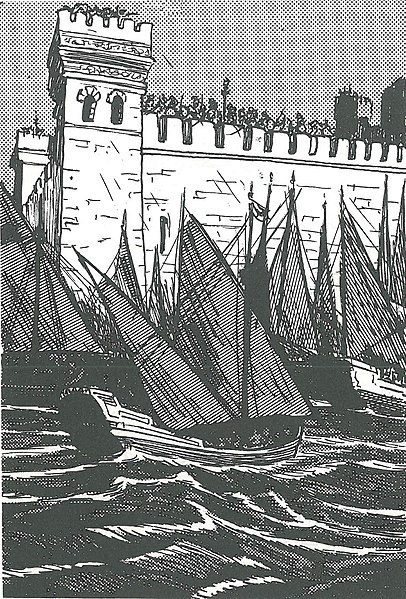The Battle of the Masts took place in 655 and was one of the earliest major naval conflicts between the rising might of the Muslim Arabs and the Byzantine Empire.

Map of the Byzantine Empire during Middle Ages
During this naval battle, Byzantine fleet had cross raised on its masts while Muslims had crescent raised on their masts, giving the battle its name.
The battle ultimately proved to be a victory for Muslims although both sides had to sustain significant losses. The Muslim victory paved the way for an expansion of Arab might over the Mediterranean waters.
In the 7th century, Arabs united under the banner of Islam and rapidly began an expansion of their political and religious empire.
The first phase of this expansion took place under the Rashidun Caliphate. Under the fourth Rashidun Caliph Uthman, Muslims consolidated their rule in Egypt and began using it as a springboard to launch campaigns into the Mediterranean waters.

The earliest of these campaigns brought Cyprus under Muslim control, encouraging the Arabs to range farther with a stronger naval fleet.
In 655, Muslims launched a large-scale campaign, both on land and sea, which aimed at conquering territories under direct Byzantine rule. The Byzantine Empire responded by confronting the Muslim fleet at sea.
The Muslim fleet was led by Abu’l-Awar while the Byzantine fleet was headed by Emperor Constans himself.
Due the extensive naval interactions between the two sides over previous years, it is believed that the naval organization and tactics of both sides were fairly similar.
According to some estimates, the Byzantine naval fleet comprised of nearly 500 ships while the Arab fleet comprised of 200 ships.
The two fleets met near the coast of Lycia and a ferocious battle ensued. Emperor Constans, given his numerical superiority, did not bother to bring his ships into proper formation and sailed his entire fleet into the midst of the disorganized Arab fleet.
In the fighting that followed, both sides sustained heavy losses and although the Byzantines outnumbered the Arabs, the Arabs ultimately stood victorious. The Byzantine Emperor barely escaped with his life and made his way back to Thessalonica.
According to some historical sources, Arab admirals used a novel strategy of tying together their ships, turning their fleet into a single unit. The Muslims would then fling chains on to any Byzantine ships nearby and pull it to their unified fleet, overtaking it then and destroying it.
Both the Arab and Byzantine fleets sustained heavy losses. And although the Arabs stood victorious, they had to retreat to recoup their losses. However, the victory was a major event in the naval history of the Mediterranean Sea.
From long being a ‘Roman lake’, the Mediterranean became a contending point between the naval might of the rising Muslim Empire and the Byzantine Empire.
This conflict would continue over the subsequent decades, with Muslims using their supremacy at Mediterranean to go as far as Sicily and establish strongholds in Western Europe. The victory also paved the path for uncontested Muslim expansion along the coastline of North Africa.
Navy Of Byzantine Era (Greek Edition) (Greek) Paperback – January 13, 2009
Learn More about the Battle of the Masts at Wikipedia